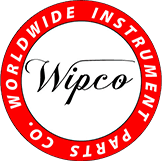From prototyping to production, machining stainless steel can be complex and confusing. With so many variables like material hardness, cutting tools, and the correct machining method, even professionals have a hard time knowing where to begin.
Fortunately, our guide for stainless steel machining will make things easier for you. We’ll look at the basics, such as various machining techniques to expert tips when working with stainless steel and its unique properties, arming you with the information you need for a successful project every time.
What is Stainless Steel?
Stainless steel is known for having high tensile strength. It also has excellent corrosion resistance, which is why it’s a preferred material across numerous demanding industries despite it being notoriously difficult to machine. However, with the proper machining procedures and tools, machining stainless steel can be achieved efficiently.
Five categories of machinable stainless steels:
- Austenitic stainless steels: Austenitic steels are denoted by numbers in the 300 range and are known as the most common form of stainless steel with high corrosion resistance and outstanding post-machining formability.
- Ferritic stainless steels: Ferritic steels have high resistance to stress corrosion cracking and oxidation in high temperatures, which are ideal in applications where the components interact with corrosive chemicals.
- Martensitic stainless steels: Martensitic steels have the same structure as ferritic steels but with a higher carbon percentage, thus, resulting in superior wear resistance and robustness.
- Duplex stainless steels: Duplex steels are twice as strong as ferritic and martensitic steels that can withstand erosion and degradation. It demonstrates stress corrosion cracking resistance, applicable for underwater applications.
- Precipitation-hardened stainless steels: Precipitation-hardened steels offer superb strength and mechanical properties while retaining their corrosion resistance, especially when they undergo heat treatments.
Various Stainless Steel Machining Processes
There are numerous machining methods you can choose from to create stainless steel parts. Below are some of the most common methods used in different industries:
- Milling: Milling stainless steel involves high-speed rotating cutting tools that remove material on a stationary workpiece. It’s known for accomplishing highly accurate stainless steel parts and components with an incredibly smooth cutting edge.
- Turning: Turning is one of the most commonly used machining methods for stainless steels that utilizes a stationary cutting tool and a rotating workpiece. It’s imperative to keep the tool’s overhang minimal when machining stainless steel.
- Laser Cutting: An amplified light beam is used to melt and cut through stainless steel, which makes laser cutting an effective method for thin metal sheets.
- Drilling: Commonly used as a secondary machining process with other metalworking techniques is drilling. It’s primarily utilized for creating holes with small diameters.
Tips for Machining Stainless Steel
For ease and efficiency, here are some tips for machining stainless steel:
- Opt for high-quality materials: Choosing the best stainless steel grade can help you accomplish the smoothest operations.
- Add coolant: Prevent work hardening by adding coolant to the cutting tool to reduce difficulty in machining stainless steel.
- Proper tool material: The right tooling material can produce superior results. Furthermore, ensuring that the machine setup is tight will prevent tool chatter, a common culprit of poor machining.
- Lubrication: Lubricants are essential during machining as they prevent friction between the tooling and material. Additionally, lubricants can wash away material residue from the workpiece and tools.
Accomplish High-Performance Stainless Steel Parts with the Right Manufacturer
Machining stainless steel requires expertise and experience, so it’s crucial to partner with a trusted manufacturer with extensive knowledge of this challenging material. At WIPCO, we have state-of-the-art equipment, advanced technologies, and a team of skilled professionals dedicated to delivering high-quality stainless steel parts for your specific requirements.
Contact us now to learn how we can deliver top-quality outcomes for your projects. You can also request a quote, and we can find a cost-effective solution tailored to your needs!
